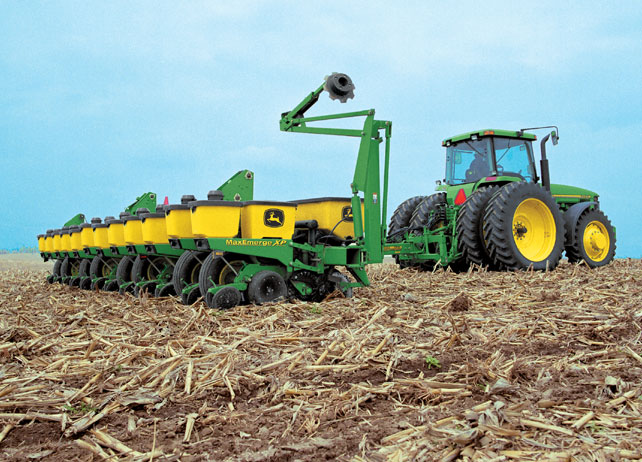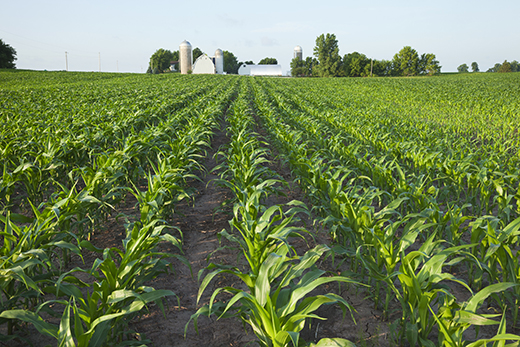
Nebraska planting is almost complete, just in time for the summer heat to kick in. According to the USDA’s National Agricultural Statistics Service’s (NASS) latest crop progress report for the week ending June 12th, 97 percent of soybean acres in the state were in the ground, with 99 percent of corn emerged.
With average rainfall reported in most areas, the temperatures the past week averaged 6 to 8 degrees higher than normal, with more hot temperatures expected this week. Although corn grows well under hot, humid conditions, growers are hoping to see some more rainfall in the coming weeks to keep irrigating to a minimum.
Looking solely at Nebraska crop progress, the report showed that progress was, for the most part, ahead of last week, last year, and ahead of the past 5 year average for all major Nebraska crops. Corn emerged is at 99 percent, 9 percentage points ahead of last week and 4 ahead of last year.
Soybeans are 97 percent planted, well ahead of last year’s 89 percent, and in line with the 5 year average. Soybeans emerged are at 84 percent, well ahead of last year’s 73 percent, though lagging slightly behind the 5 year average emergence of 86 percent for this week.
As for moisture conditions, topsoil moisture supplies rated 2 percent very short, 23 percent short, 70 percent adequate, and 5 percent surplus. Subsoil moisture supplies rated 0 percent very short, 12 percent short, 82 percent adequate, and 6 percent surplus.
Crop conditions across the Cornhusker state are doing well. The report showed corn rating at 1 percent very poor, 2 percent poor, 18 percent fair, 67 percent good, and 12 percent excellent.
Soybean conditions followed suit, with 0 percent rating as very poor, 2 percent poor, 19 percent fair, 69 percent good, and 10 percent excellent.
Hay growers are off and running, with the first alfalfa cutting at 81 percent complete across the state, well ahead of last year’s 50 percent marker and the 61 percent 5 year average. Alfalfa stands are in good condition, with 2 percent rating very poor, 3 percent poor, 10 percent fair, 70 percent good, and 15 percent excellent.
Our UFARM managers are reporting that throughout the eastern half of the state the hot temperatures have contributed to very rapid crop growth, although rainfall is beginning to be at a premium, with very spotty rainfalls being reported. However, top- and subsoil moisture conditions are still adequate for the time being, and there are no major crop pest problems to contend with as yet for most areas.
As stated earlier, however, temperatures this week and into the weekend are forecasted to be in the high 90s, with little chance for rain for most of the state, and growers are anticipating the need to turn on their pivots, have they not already.
Source consulted: “Nebraska Crop Reports 2016.” CropWatch. University of Nebraska-Lincoln. 15 Jun. 2016. Web. 16 Jun. 2016.

Despite myriad opinions regarding ethanol mandates among the US population, and even among farmers themselves, four out of the five remaining presidential candidates support the continuance of the 2005 congressional mandate. Also known as the Renewable Fuel Standard (RFS), it requires refiners to blend enormous amounts of biofuel, mostly corn-based ethanol, into gasoline.
Many corn producers offer support for such mandates, naturally, as it creates a demand for corn, artificial though it may be, and helps to bolster the price of corn. Other supporters cite environmental reasons, asserting that ethanol blends emit less greenhouse gases, and is therefore a cleaner alternative.
What many fail to realize, however, is that the RFS was designed to cap corn ethanol after a period of time (in 2015), and ramp up efforts to utilize “advanced” biofuels. Corn is not categorized as advanced, in this case. As such, if the RFS standard remains in place, it intends to gradually displace corn’s market share, transitioning from consisting of biofuels made from corn to those made from non-food and non-feed crops.
According to the Congressional Research Service (CRS), the transition would eventually reduce corn for biofuels to 40 percent.
The American Energy Alliance’s Thomas Pyle writes, “Unlike ‘advanced’ biofuels, which are scarce and expensive, corn ethanol is a viable product that boosts octane and improves engine performance. Refiners would still purchase corn-based ethanol without the RFS. But if the RFS remains in place, corn stands to lose out to products that do not pass the market test, simply because Washington decrees it.”
His solution? Repeal the entire RFS, forcing the “advanced” biofuels to compete against corn on a level playing field. Corn-based ethanol would, according to Pyle, retain its share of the total fuel market.
While we don’t know the likelihood of this happening in the future, only one remaining candidate, Ted Cruz, has voiced support for the phasing out of the RFS. With this backstory in mind, it’s not as cut-and-dried as would originally meet the eye. The other candidates, consisting of Donald Trump, John Kasich, Hillary Clinton, and Bernie Sanders have all voiced support for continuing the RFS put in place in 2005.
Still, Iowa corn farmers pulled away any prior support from Cruz for his RFS position. Whether it is because of a lack of awareness of the RFS’ eventual reduction of corn for “advanced” biofuels, or for other reasons, remains to be seen.
If ones adopts a more cynical position, he/she would argue that such widespread support of the ethanol industry among the top candidates is due in large part to the first primary voting that took place in corn-producing Iowa in February. As such, candidates pander to strong ethanol support in the state, hoping to get off on the right foot from the start of the election schedule.
However, at this point in the election year, it’s safe to say that the RFS mandate will remain in place for the foreseeable future in its current form.
Sources cited: Pyle, Thomas. “Ethanol Mandate Hurts Iowa Corn Farmers.” The Hill. Capitol Hill Publishing Corp. 26 Jan. 2016. Web. 31 Mar. 2016.
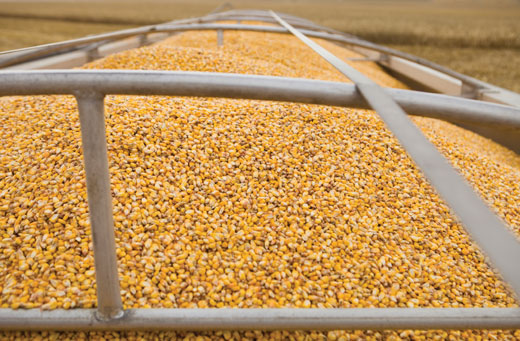
As farmers across the Cornhusker State park their harvesting equipment for the winter, many are feeling the satisfaction of reaping a bountiful harvest. According to the USDA’s National Agricultural Statistics Service (NASS) data for November 1st conditions, Nebraska boasted a record high 1.68 billion bushels, up 4 percent from last year. The area harvested for corn was 9.00 million acres, also up a percentage point. Likewise, the average yield forecast is at a record high 187 bushels per acre, up 8 bushels per acre from 2014.
Nationally, the corn production forecast was up only slightly from October estimates, at 13.7 billion bushels. However, this number is also down 4 percent from last year’s record corn production. Based on November 1st conditions, NASS data showed that the national yield average stands at 169.3 bushels per acre, up from last month, but down 1.7 bushels from the 2014 average.
Still, if the 13.7 billion bushel estimate is realized, it will represent the second highest yield and third largest production on record for the nation.
Nebraska farmers also brought in a mammoth soybean harvest, with a record high forecast of 291 million bushels—1 percent up from last year. Similarly, the record yield forecast stands at 56 bushels per acre, up 2 bushels from 2014.
Nationwide soybean production tells a similar story. Soybean production forecasts are at a record 3.98 billion bushels, up 2 percent from 2014. Nationwide soybean yields are expected to average 48.3 bushels per acre, up 1.1 bushels per acre from last month and up 0.8 bushels from the 2014 harvest.
Of course, record harvests also spell lower commodity prices, and despite doing well in the fields, farmers in the state and across the nation are feeling the pinch of the continued low corn and bean prices. According to the Federal Reserve Banks of Kansas City and St. Louis, farm incomes are falling at a dramatic pace, and farmland values are following suit. After three straight years of record crops and falling commodity prices, this trend isn’t unexpected.
Looking ahead, what is the best plan for farmers facing these current challenges?
According to commodities advisor and broker Al Kluis, there are 5 strategies producers may employ—with varying degrees of success. Writes Kluis:
- Hold it and hope:This worked one year out of the last 10. However, it has been a disaster since 2012. Many farmers in a high-equity position (meaning they don’t have much debt) typically hold it and hope. Farmers with deep pockets and big bins can afford to do this, though that still doesn’t mean they make money doing it.
What about farmers who are leveraged or who have two bad crops in a row? Hold-it-and-hope can be a fatal choice, because hope is not a marketing plan.
- Hold and protect: In other words, hold it all and protect the downside with put options. This strategy would allow you to wait for basis improvement, but it would require you to write out a large check for your futures account. Unfortunately, your farm finances may already be tight. Still, it may be worth considering doing this on 5% to 10% of your corn crop just so you can learn how it works.
- Hedge and wait:Hedge the corn and soybeans out into the spring and summer of 2016 and wait for the basis to improve, particularly if you have the corn and most of your soybeans stored at home. This is something to consider on some of your corn crop because of the large carry in the corn futures market, but it doesn’t make any merchandising sense for soybeans.
You need to treat each crop very differently, depending on your basis, carrying charge in the futures, and your local merchandising alternatives.
- Plan and sell:Put together a scale-up marketing plan using both price and time targets so your crop is sold by mid-July. In this plan, you would make a series of 10% or 20% sales. This type of marketing plan takes more time and effort, but it can also make the farm a lot more money. The farmers who do this are not the hold-it-and-hope type. They are a lot more involved with the grain markets each day. Remember, you are growing money – not crops. Do this on 50% to 80% of your corn and soybean crops.
- Sell and buy calls:Sell it all and buy call options back. This would generate a lot of cash right now and would allow you to make more money if futures go higher later. This only makes sense for the soybeans you have in the grain elevator. The cost of the call option is less than your interest and storage bill of keeping the soybeans at the elevator.
With these strategies in mind, it’s important to have a plan in place.
If you’re concerned about employing marketing strategies for your farming operation, feel free to contact UFARM for a consultation. UFARM offers a full range of Nebraska land management services, including real estate sales, rural property appraisals, consultations and crop insurance. UFARM has operated in Nebraska since the early 1930’s. Contact us today!
Sources consulted: Kluis, Al. “Five Strategies to Consider for the 2015 Crop.” Agriculture.com. Meredith Agrimedia. 18 Nov. 2015. Web. 19 Nov. 2015. “Nebraska Corn, Soybean Harvests to Hit Record Highs.” CropWatch. University of Nebraska-Lincoln. 10 Nov. 2015. Web. 19 Nov. 2015.
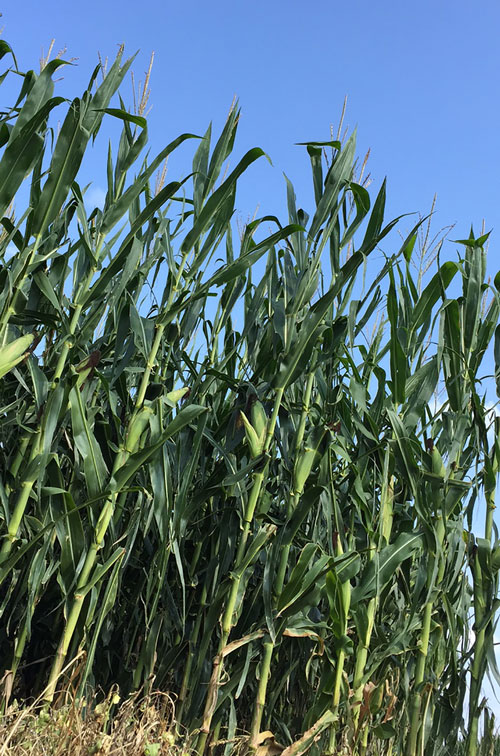
Hail Damaged Corn in Northeast Nebraska
When it comes to important growing milestones, July is an important month, especially for corn. The USDA released its weekly crops progress report on Monday. How are things looking for Nebraska crops, as well as for crops across the Midwest?
The good news is that, after a slow start to planting season and early on due to excess moisture, the progress is picking up. Both corn and soybeans have made decent strides over the last several weeks, though they are still behind last year’s data.
Overall, the USDA rated the corn from the 18 top corn-growing states as 70 percent good/excellent. This is improved from last week’s 69 percent, but behind the five-year good/excellent average of 75 percent.
Another area where corn made great strides from last week was in corn silking—a critical stage of development. This week, the USDA found that 78 percent of the nation’s corn crop is silking, versus 55 percent a week ago. Similarly, 14 percent of that crop is in the dough stage, slightly behind the five-year dough stage average of 17 percent.
Nationwide, for soybeans, the USDA rated the crop as 62 percent in good/excellent condition, which is equal to last week, but behind last year’s 71 percent.
As for important soybean developmental milestones, nationwide, 71 percent have bloomed, slightly behind last year’s 74 percent, and only one percentage point behind the five-year average for soybean blooms at this time.
In comparison with the nationwide crop numbers, how are Nebraska crops doing?
Fortunately, for the week ending July 26th, the state experience near normal temperatures statewide. Southeast portions of the state received up to four inches of rain, while the rest of the state’s moisture totaled 1 inch or less. The combination of favorable weather and moderate rainfall facilitated crop development, although some areas with less moisture are reported dryland stress symptoms. The NASS reported 6 days suitable for fieldwork, with topsoil moisture supplies rated at 6 percent very short, 24 short, 66 adequate, and 4 percent surplus.
For Nebraska corn conditions, 74 percent rated as good/excellent, better than the nationwide rating of 70 percent. This is ahead of last week’s 69 percent, but behind last year’s 75 percent.
Nebraska corn silking was at 83 percent, ahead of the nationwide average of 78 percent. This is one percentage point ahead of last year’s 82 percent, as well as the five year average of 82 percent.
Similarly, Nebraska soybeans are faring better than the total 18 state average as well, with 72 percent as good/excellent. This is one percentage point ahead of last year’s 71 percent good/excellent rating. Nebraska soybean blooming rate was at 77 percent, which is behind last year’s 82 percent, but near the 78 percent average.
Will the favorable conditions hold into August? Only time will tell. As of now, Nebraska crops are doing well. UFARM land managers are on the ground in Nebraska fields throughout the growing season, and can keep you updated on the latest conditions.
UFARM offers a full range of Nebraska land management services, including real estate sales, rural property appraisals, consultations and crop insurance. UFARM has operated in Nebraska since the early 1930’s. Contact us today!
Sources consulted: “Nebraska Crop Progress and Condition.” USDA. United States Department of Agriculture National Agricultural Statistics Service. 27 Jul. 2015. Web. 28 Jul. 2015.
After a quick start, corn and soybean producers across Nebraska and the nation are barred out of the fields to complete their last acres of planting, courtesy of a rainy, cool weather pattern. The latest weekly USDA crop progress report, postponed by one day due to the Memorial Day holiday, reflected this slowdown, both for Nebraska farmers and those in the 18 other states reported on.
Despite the slowdown, the nation’s crop producers are still ahead of the previous average, and emergence for both corn and soybeans made great bounds in the last week, according to the report numbers.
Taking a closer look at the national corn numbers, as of the week ending Sunday, May 24th, 92 percent of the nation’s corn crop is in the ground, up 7 percent from the previous week, and still ahead of the normal pace by 5 percent. Corn emergence stands at 74 percent, up considerably from 56 percent a week ago. Emergence now sits 12 percent ahead of the normal pace for this week of the year.
For beans, 61 percent are planted, up from 45 percent a week ago, and 6 percent ahead of the previous average pace. Beans have made great gains over the last week, as well, with emergence for the crop at 32 percent, up nearly 20 percent from the previous week and 7 percent ahead of normal pace.
Looking specifically at Nebraska numbers, the report showed corn planted at 92 percent as well, compared with 96 percent last year and 96 percent for the five year average. Corn emergence stood at 73 percent, compared to 70 percent last year, and ahead of the 67 percent average.
For Nebraska beans, farmers have 59 percent in the ground, largely behind last year’s 85 percent, as well as the 73 percent five year average pace. Soybean emergence was at 22 percent, also behind last year’s 38 percent and the 31 percent average.
This should come as no surprise, as the state has face cool, wet weather that has prevented planters from entering the fields. According to the latest report:
“For the week ending May 24, 2015, cloudy, wet conditions hampered spring planting activities with an inch or more of rainfall common in the western half of the state. Temperatures were again cool, and averaged six to eight degrees below normal.”
While it’s not a problem to have adequate moisture for emerging crops, too much coupled with long durations of cloudy weather can cause problems. Many producers are reporting yellow corn in the state. A WCMO listener stated, “A lot of acres here [are] looking under the weather in south-central Nebraska. Way too much cloudy, drizzly weather. Starting to see chemical damage in corn from not being able to metabolize the chemicals. A lot of the corn has bad color. Some beans have been in the ground for almost 2 weeks and haven’t emerged yet.”
The weather forecast across the northeast, north central and south central parts of the state predict yet more rain chances in the coming days, coupled with cloudy weather. Farmers will be on the lookout for sun and a chance to get those last few acres in the ground.
UFARM offers a full range of Nebraska land management services, including real estate sales, rural property appraisals, consultations and crop insurance. UFARM has operated in Nebraska since the early 1930’s. Contact us today!
Sources consulted: Caldwell, Jeff. “Corn Planting at 92%, Soybeans at 61% as Midwest Weather Sours.” Agriculture.com. Meredith Agrimedia. 26 May 2015. Web. 27 May 2015. USDA. “Crop Progress Report for the Week Ending 5/24/15.” USDA.com. United States Department of Agriculture. 26 May 2015. Web. 27 May 2015.
The May Baskets had been made, delivered and stored for next year, but that didn’t matter to Mother Nature, as a snowstorm blanketed a large portion of the Nebraska Panhandle on May 9th. Most of the wheat-growing regions from the southern Panhandle to South Dakota received anywhere from 6-18 inches of snow, causing some damage to the crop of varying degrees.
The snow presents yet another challenge to wheat growers in the area, some who have already been dealing with winter injury or winter kill, relating to variety, seeding date, and seeding depth. Now, with the May snow, the total impact could be significant, given the 695,000 acres of wheat this year, as reported by the Panhandle Crop Reporting District.
Growers have been busy assessing the type and degree of damage, and are encouraged to spend some time doing so. While the crop may appear to have recovered, closer inspection often displays damage not detectable from the road. UNL Extension Specialists Karen Deboer and Robert Klein reported that 10-40% of the wheat stems in the field had been broken or damaged due to lodging from the heavy, wet snow.
According to Deboer and Klein: “The many factors influencing freeze injury to wheat — plant growth stage, plant moisture content, and duration of exposure — often make it difficult to predict the extent of injury too quickly. This is complicated further by differences in elevation and topography among wheat fields and between the fields and official weather stations. It is not unusual, for instance, for wheat growers to report markedly lower temperatures than are recorded at the nearest official weather station.”
While wheat can compensate since remaining tillers with viable heads, wheat will not compensate for lost stems if loss is above 25-30 percent. Should growers already have substantial winter kill, it is in their best interest to take great care in determining if the wheat should be brought through to harvest.
After determining the extent of damage, there are a few options for growers. If there is significant damage, the first option is to take the crop to harvest. This is also the least expensive option, and, depending on crop insurance coverage, may not make money, but will keep the producer from losing money. According to Extension Specialists at the Panhandle REC, “The projected price on crop insurance for wheat is $6.41 per bushel, so producers with revenue coverage may have an attractive revenue guarantee, relative to expected actual revenue from both lower yields and lower prices.”
A second option is to use the crop for forage. This could be done either by harvesting it or for grazing, while also providing grazing animals with supplements for bloat prevention.
Another option is to remove the wheat altogether, through tillage or an application of Roundup, and planting it back to proso millet, corn, or sunflower. Extension specialists recommend that growers first review their herbicide program. That way, they could “make sure there would be no plant-back restrictions. [They should also] check crop insurance provisions for fallow eligibility.”
Sources consulted: DeBoer, Karen, and Robert Klein. “Assessing Freeze Injury to Wheat.” Cropwatch. University of Nebraska-Lincoln. 12 May 2015. Web. 18 May 2015. Hergert, Gary, et al. “Freeze-Damaged Winter Wheat in Panhandle.” Cropwatch. University of Nebraska-Lincoln. 15 May 2015. Web. 18 May 2015.
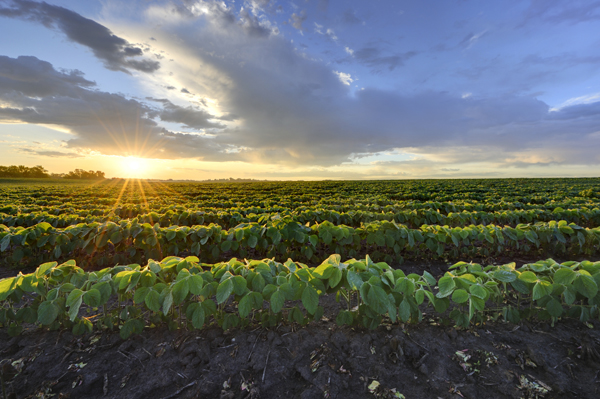 Following the last WASDE report from February 20th, analysts have been busy in their ongoing efforts to gauge the nation’s farmers’ cropping decisions. While this is no simple task, a few trends have emerged, and a clearer picture of the 2015 cropping landscape is emerging, with a few surprises.
Following the last WASDE report from February 20th, analysts have been busy in their ongoing efforts to gauge the nation’s farmers’ cropping decisions. While this is no simple task, a few trends have emerged, and a clearer picture of the 2015 cropping landscape is emerging, with a few surprises.
According to the 2015 Grain and Oilseeds Outlook report, also released February 20th, and the USDA’s chief economist Robert Johansson, farmers will be planting less of every crop in 2015. While many did expect producers to back off from the crops with more expensive inputs, and fill those acres with less expensive crops, it appears that they are instead scaling back across the full spectrum. Looking specifically at the numbers, the USDA expects planted acres of corn, wheat, and soybeans to total 228 million acres in 2015, down 3.1 million acres from 2014. This overall decrease doesn’t come as a surprise, given lower overall commodity prices.
Naturally, many reports predicted beans to fill the void, with their lower cost of production. Trade guesses as to 2015 soybean projections range from 82.1-88.3 million acres, that high being 4.8 million acres above the record high 2014 numbers. On average, trade projections stand at a 2.8 million acre average above 2014 numbers.
However, the Grain and Oilseeds Report surprised the market by totally dismissing those increased soybean acres predictions, and went one further in predicting even fewer acres of soybeans planted in 2015. According to John Newton at the University of Illinois Agriculture and Consumer Economics Department: “For 2015, USDA projects planted acres of soybeans at 83.5 million acres. If realized, this total would represent a 200,000 acre decline from 2014, and is significantly less than the average trade guess of 86.0 million acres. With respect to harvested soybean acres, the USDA projection is for 82.6 million acres, down 500,000 acres from 2014, but 2.7 million acres less than the average trade guess of 85.3 million acres.”
Never a dull moment to be had in the grain market, Newton goes on to point out that, despite the lower-than-expected projections for harvested soybean acres, the USDA also predicts yields above market expectations. “These two measures effectively offset, and the projected size of the soybean crop is only 56 million bushels below the average trade guess of 3.856 billion bushels,” he says. Analysts will continue to monitor the consumption pace of 2014-15 soybeans, and will be able to see a clearer picture when the USDA’s Prospected Plantings report is released on March 31st. In the meantime, beyond the decision about which crops to plant or not plant, weather will be a big variable in the next two months.
Are you concerned about what cropping decisions will be best for your land and farming operation? Let UFARM offer their expert advice—they are glad to hear your concerns and come up with a sensible solution for your land.
Sources consulted: Floyd, Allison. “Farmers Will Plant Less Acres in 2015.” Growing Nebraska. Growing America. 20 Feb. 2015. Web. 02 Mar. 2015. Newton, John. “Projected Soybean Plantings Are Surprisingly Low.” Farmdoc Daily. Department of Agriculture and Consumer Economics, University of Illinois Urbana-Champaign. 23 Feb. 2015. Web. 02 Mar. 2015. Potter, Ben. “Projected Soybean Acres Surprisingly Low.” Agweb. Farm Journal. Feb. 2015. Web. 02 Mar. 2015.
 While it’s no secret that the main component of farm profitability involves producing a good crop with the greatest efficiency and lowest cost of production, it’s also true that marketing that crop plays a significant role in profitability as well. While farmers and landowners may differ in their individual marketing style, it’s important that they identify and employ a grain marketing strategy that works for them.
While it’s no secret that the main component of farm profitability involves producing a good crop with the greatest efficiency and lowest cost of production, it’s also true that marketing that crop plays a significant role in profitability as well. While farmers and landowners may differ in their individual marketing style, it’s important that they identify and employ a grain marketing strategy that works for them.
A study by the Kansas State University Extension Cooperative identified four main grain marketing strategies that are typically used by producers: routine strategies, systematic strategies, strategies based on individually generated forecasts, and strategies based on market-generated forecasts of production profits.
With routine strategies, there are little to no surprises; the producer makes grain marketing decisions at the same time of year using the same marketing tools regardless of market conditions. In this way, once the marketing decisions have been made, little to no further input is needed, and marketing decisions become rather automatic.
Systematic strategies base decision making on key market indicators and allow for year to year variations in marketing actions. A producer employing a systematic marketing strategy pays attention to the key market indicators and what they’re doing based on the market conditions for that time period, and makes decisions accordingly.
Some producers are able to market their crops year to year based upon their own individually generated marketing forecasts, owing to superior access to market information or background experience in the marketing field. These producers are able to consistently profit by basing their marketing decisions upon their own market forecasts.
The last grain marketing strategy involves basing marketing decisions upon market-generated forecasts of production profits. This is done by using futures and options prices as a basis for production and marketing decisions. Examples include storing grain for postharvest sale when the harvest basis levels are wider than normal, or by hedging grain futures when preharvest grain forecasts are signaling higher than normal profits, and avoiding hedges when they are signaling lower than normal profits. This strategy, according to the KSU study author, “is based on anticipating the crop acreage responses of the collective group of grain producers to either high or low expected profits from a crop enterprise, and the subsequent change in production and subsequent prices that will occur the following harvest. Higher than normal preharvest hedging profits will give an incentive to crop producers to increase crop acreage and associated production, leading to lower prices by the following harvest.”
Determining which of the above grain marketing strategies is right for your operation depends on a number of factors, such as your individual marketing style and temperament—including your attitude toward price risk, the existing financial state of your farming operation, your grain storage availability, and your familiarity with markets and marketing tools.
Identifying your main marketing goals with the factors listed above in mind will help you to determine which grain marketing strategy is the right fit. Whether it’s price enhancement or price risk reduction, having a good marketing strategy in place can help your bottom line and your peace of mind.
If you have questions or concerns about the marketing strategies available to you, feel free to consult a UFARM manager to help point you in the right direction.
Sources consulted: O’Brien, Daniel. “Grain Marketing Plans for Farmers.” Kansas State University. Kansas State University Agricultural Experiment Station and Cooperative Extension Service. Jul. 2000. Web. 26 Jan. 2015.
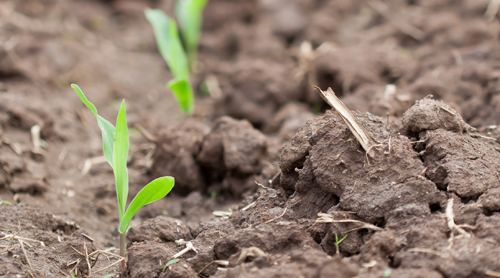
As harvest 2014 comes to a close, farmers are already thinking ahead to next year’s crop production. With tumbling grain prices, many farmers are anticipating tighter profit margins in the near future, and are scrutinizing their input costs more carefully as a result. With many analysts expecting higher input costs, farmers may have their work cut out for them.
As producers look to trim down where they can and maximize where they will see the biggest return on their dollar, it seems as if many are taking a wait-and-see approach to find out if some inputs, such as fertilizer prices, will moderate in the spring. As a result, some farmers are waiting to apply their fall fertilizer, or even skipping it altogether. University of Illinois agriculture economist Gary Schnitky says farmers are looking closely at phosphorous (P) and postassium (K) needs. For nitrogen (N), some farmers are gambling that prices will drop in the spring—a reasonable gamble, since many producers will be switching their corn acres to beans. Soybeans, with their lower need for inputs such as nitrogen, will likely lower demand, thereby moderating the price. While NPK fertilizers are still the rule, many producers are also looking into alternative fertilizer sources, such as manure, to save on fertilizer costs going forward.
For other producers, trimming their input costs will mean buying older seed hybrids with less technology and a lower price tag. Many are also evaluating their planting population rates and locations, planting higher populations in higher-yielding areas and lower populations in low-yielding areas. This would readily translate into less cost for the grower. While seed prices have continued to rise over the last several years, seed producers will have to moderate a bit due to high inventories—welcome news for producers.
While moderating on fertilizer and seed costs results in more immediate savings outcomes, many farmers are hoping for cash rents to moderate as well. As harvest comes to a close, farmers are talking with their landlords about farm rent, and the pressure is on for landowners to come down on rents to make them better reflect the current market climate. According to Iowa commodity broker David Kruse, much stiffer cuts should be in order. In his recent crop comments, he says, “If they were paying $400 per acre, a 5% or $20 per acre reduction to $380 per acre would be like tinkling on a bonfire resulting in not much effect. Without a much more significant reduction in cash rent, farming will be a losing proposition for many tenants next year.”
While cash rent prospects are less likely to change significantly, one bright spot is falling fuel prices, which are expected to stay low for the duration of the next growing season. This, coupled with projected lower levels of machinery depreciation, may ease the pain of higher input costs for 2015.
Do you have concerns or questions about your farm operation going into the next growing season? Let the experts at UFARM lend you a hand. UFARM offers a full range of Nebraska land management services, including real estate sales, rural property appraisals, consultations and crop insurance. UFARM has operated in Nebraska since the early 1930’s. Contact us today!
Sources consulted: Caldwell, Jeff. “Machinery Depreciation Most Likely Leader of Lower Input Costs.” Agriculture.com. 23 Sep. 2014. Web. 17 Nov. 2014. Hoskins, Tim. “Drop in Grain Prices Prompts Review of Input Prices in 2015.” Iowa Farmer Today. Iowafarmertoday.com. 18 Oct. 2014. Web. 17 Nov. 2014. Taylor, Marcia Zarley. “Spooky Forecasts for Grain Income.” DTN: The Progressive Farmer. Dtnprogressivefarmer.com. 07 Nov. 2014. Web. 17 Nov. 2014.
GET TO KNOW US
Recent Posts
- Lancaster County, Nebraska, Land for Sale May 28, 2025
- Lincoln County, Nebraska, Land for Sale May 2, 2025
- Lincoln County, Nebraska, Pasture/Hunting Land for Sale April 30, 2025
- Seward County, Nebraska, Surface Irrigated Cropland April 11, 2025
- Factors That Affect the Value of Agricultural Land: A Complete Guide for Buyers and Sellers March 13, 2025
- Thurston and Dakota Counties, Nebraska, Simulcast Auction – March 6, 2025 January 30, 2025
OFFICE LOCATIONS
Lincoln, Nebraska
402-434-4498
Kearney, Nebraska
308-237-7662
Norfolk, Nebraska
402-371-0065
North Platte, Nebraska
308-532-4991
FOLLOW US


